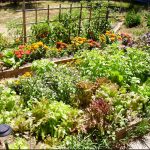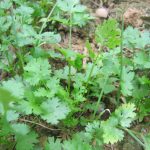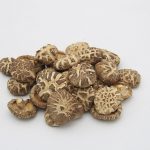Watercress-How To Grow It
Table of Contents
Are you looking for one super food to grow in your homes? Then look no further, the answer is watercress. It is contains more of Vitamin A, VitaminB1, VitaminB3, Vitamin C, Vitamin K, calcium, potassium and iron; wow! You can never imagine getting all these nutrients from any other vegetable. You will be excited and even feel more fulfilled than just being champion growing veggies. Your entire body will gain from the health values.
This easily grown veggie is known worldwide for its nice peppery taste and for its distinct nutritional values. Watercress has been identified as a good veggie due to its outstanding health advantages for all times. It is currently helping to rejuvenate home gardens in every home.
Watercress, botanically called Nasturtium Officinale, has its origin from the mustard family and it’s commonly found in water. It’s usually found near slow flowing water growing naturally. Since most of us are not lucky enough to have a stream flowing through backyards, we could still add watercress to our farms in our yards. We can even grow watercress in a container on our kitchen table.
METHODS FOR GROWING AND CARING FOR WATERCRESS
The main reason behind a successful watercress harvest is water. If you are lucky enough to have a fresh, moving water source in your yard, you can grow watercress in the same way it grows naturally. Look for a source for a transplant of watercress. A large quantity of watercress can be found at various local farmers’ mart and even in the wild.
If you choose the ones from a farmer’s mart, check for shoots of roots at the base of the stems. Place the stems in water to cause rapid root growth if need be. Watercress takes root very easily. When the roots show forth, that means the watercress is ready for planting. Or, if a transplant is uprooted from the wild, be sure to watch the whole plant cautiously before you introduce the plant to your garden.
The roots of the watercress can be easily broken; not strong at all, so handle your transplants with total carefulness. Plant the roots with care in a wet soil around your water source. Your watercress should grow easily and flourish well in this water area.
Planting your watercress in containers means you need to select two containers to arrange them close to each other. Be sure the first container has a hole that allows for drainage. The first container will need to be inserted into the second bigger container or tray. The second container will supply a spring of fresh water always.
To prepare the first pot of watercress, fill the pot with a manure-rich soil. Buy a fresh bunch of watercress from a local farmer’s mart or grocery store. Plant some stems of watercress having root shoots into the soil and water it nicely. Insert the first pot into the second bigger container or tray that is filled with water. The water will soak into the soil via the drainage hole of the first pot and make the soil remain moist for the watercress roots to germinate. Water the plant with clean and fresh water daily.
Your water garden will produce the most watercress if you allow it several hours of morning sun each day. Allow for afternoon shade. Your outside watercress will produce tender, tasty leaves for several months. Once the outdoor plant goes to flower, the flavor will become bitter tasting and your harvest season will be over.
To harvest your watercress, snip off the leaves, but don’t disturb the roots. Cut enough to eat fresh, because watercress will not store well. If you have to store it, place it in a plastic bag in the refrigerator for up to 3 days.
For a handy edible garden right in your kitchen, fill a glass bowl or fish tank with 2 inches of smooth rocks or pebbles. Fill the bowl with mineral water, and place a few stems of watercress among the rocks. The roots will reach down into the pebbles, and the greens will fill in over the surface of the water. Snip your greens, and enjoy!
Pests and Problems
Watercress attracts flea beetles and mustard beetles. To get rid of these pests, immerse your plant in water for an hour. The bugs will drown, and your plant won’t the mind getting dunked. You might also consider growing a few radish plants near your watercress. The radishes will attract the bugs away.
To learn more on the nutritional facts and health benefits of watercress watch this video:
Source: TheGardeningChannel
Featured Image: credit to Flickr/Wendell Smith


















